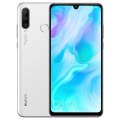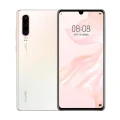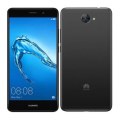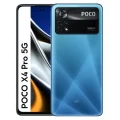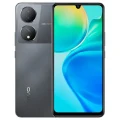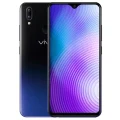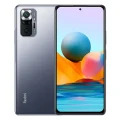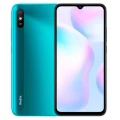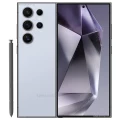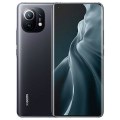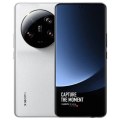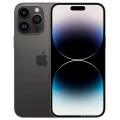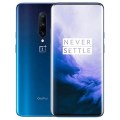- Awesome page
- Latest Mobile
- Smartphones
- Huawei P30 Pro
Huawei P30 Pro
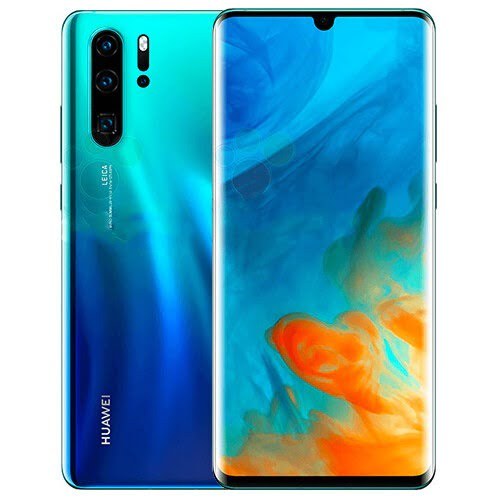


Huawei P30 Pro Price in Bangladesh
The Huawei P30 Pro is a premium smartphone priced around BDT 89,999 in Bangladesh. It offers a high-resolution display, a powerful processor, a versatile camera system with advanced features, and fast charging capabilities. However, due to US sanctions, it may have limited access to Google Play Services.
Specifications
General
| Model | Huawei P30 Pro |
| Announced | 2019, March |
| Released | 2019, March |
| Status | Available |
| Official price | 8GB 256GB ৳89,999 |
| Unofficial price | 8GB 256GB ৳57,000 |
Design
| Dimensions | 158 x 73.4 x 8.4 mm (6.22 x 2.89 x 0.33 in) |
| Weight | 192 g (6.77 oz) |
| Colors |
Aurora, Amber Sunrise, Breathing Crystal, Black, Pearl White |
Network
| Technology | GSM / HSPA / LTE |
| 2G Network |
GSM 850 / 900 / 1800 / 1900 - SIM 1 & SIM 2 (dual-SIM model only) |
| 3G Network |
HSDPA 800 / 850 / 900 / 1700(AWS) / 1900 / 2100 |
| 4G Network | LTE band 1(2100), 2(1900), 3(1800), 4(1700/2100), 5(850), 6(900), 7(2600), 8(900), 9(1800), 12(700), 17(700), 18(800), 19(800), 20(800), 26(850), 28(700), 32(1500), 34(2000), 38(2600), 39(1900), 40(2300) |
| GPRS <strong>GPRS</strong> (General Packet Radio Service) is a packet oriented mobile data service on the 2G and 3G cellular communication system's global system for mobile communications (GSM), Generally, GPRS is used for the purpose of wireless data transfer, such as sharing pictures and videos or browsing the Internet via a mobile phone connection. | |
| EDGE <strong>EDGE</strong> (Enhanced Data GSM Environment) is a wireless network technology generally considered the next step in the 2G network offers data transfer rates up to four times faster than ordinary GSM networks, Generally, EDGE is used for the purpose of wireless data transfer, such as sharing pictures and videos or browsing the Internet via a mobile phone connection. | |
| Speed | HSPA 42.2/5.76 Mbps, LTE-A Cat21 1400/200 Mbps |
Display
| Display Type <strong>Display Technology => </strong> A number of display technologies and types used in mobile phones => TFT (Thin Film Transistor), IPS (In-Place Switching), OLED (Organic Light Emitting Diode), AMOLED (Active-Matrix Organic Light-Emitting Diode), Super AMOLED (an even advanced version of AMOLED), Resistive Touchscreen (Resistive touchscreens contain two layer of conductive material with a very small gap between them which acts as a resistance), Capacitive Touchsceen (Capacitive touchscreen technology consists of a layer of glass coated with a transparent conductor) | OLED capacitive touchscreen, 16M colors |
| Size | 6.47 inches, 102.8 cm2 (~88.6% screen-to-body ratio) |
| Resolution | 1080 x 2340 pixels, 19.5:9 ratio (~398 ppi density) |
| Features |
DCI-P3 |
Camera
Main camera
| Camera Setup | Triple |
| Primary <strong>Camera</strong> is able to capture photographs and usually videos, The most important characteristics of a camera are the resolution (measured in megapixels), lens focus type (fixed or automatic), higher megapixel cameras are known to capture higher quality photos, but not always a good measurement of the photos quality. |
40 MP, f/1.6, 27mm (wide), 1/1.7&amp;quot;, PDAF, OIS 20 MP, f/2.2, 16mm (ultrawide), 1/2.7&amp;quot;, PDAF Periscope 8 MP, f/3.4, 125mm (telephoto), 1/4&amp;quot;, 5x optical zoom, OIS, PDAF TOF 3D camera |
| Features |
Leica optics, dual-LED dual-tone flash, panorama, HDR |
| Video | 2160p@30fps, 1080p@60fps, 1080p@30fps (gyro-EIS), 720p@960fps |
Selfie camera
| Camera Setup | Single |
| Primary <strong>Camera</strong> is able to capture photographs and usually videos, The most important characteristics of a camera are the resolution (measured in megapixels), lens focus type (fixed or automatic), higher megapixel cameras are known to capture higher quality photos, but not always a good measurement of the photos quality. |
32 MP, f/2.0, (wide) |
| Features | HDR |
| Video | 1080p@30fps |
Hardware
| Chipset <strong>Chipset</strong> is a group of integrated circuits designed to perform one or a more dedicated functions, often with real time computing constraints, Popular smartphones are equipped with more advanced embedded chipsets that can do many different tasks depending on their programming. | HiSilicon Kirin 980 (7 nm) |
| CPU <strong>CPU</strong> (Central Processing Unit) mostly known as processors, CPU processes instructions in order to carry out certain functions that make your device operate properly. Processors are often described as the brain of computers, smartphones and tablets, Smartphones and tablets rely on processors to carry out their every task, Processors are an incredibly important factor in selecting any type of computing device, including your smartphone. | Octa-core (2x2.6 GHz Cortex-A76 & 2x1.92 GHz Cortex-A76 & 4x1.8 GHz Cortex-A55) |
| GPU <strong>GPU</strong> (Graphics Processing Unit) is a single-chip processor designed to rapidly manipulate and alter memory to accelerate the creation of images in a frame buffer intended for output to a display, This includes things such as lighting effects, object transformations, and 3D motion. | Mali-G76 MP10 |
| RAM (Memory) <strong>RAM</strong> (Random Access Memory) is a type of computer memory that can be accessed randomly, any byte of memory can be accessed without touching the preceding bytes that allows information to be stored and accessed quickly from random locations. RAM is the most common type of memory found in computer systems, smartphones, tablets and other electronic devices. | 8 GB |
| Internal Storage <strong>Internal Storage</strong> is a data storage space (flash memory) mostly used in smartphones, tablets and other electronic devices where operating system, apps, music, photos, videos, files and other user data Is stored. | 128/256/512 GB |
| Sensors <strong>Sensors</strong> are electronic components that detects and responds to some type of input from the physical environment. The specific input could be light, heat, motion, moisture, pressure and location, The output is generally a signal that is converted to use in computing systems, a location sensor, such as a GPS receiver is able to detect current location of your electronic device. |
Fingerprint - (under display), accelerometer, gyro, proximity, compass |
Connectivity
| Bluetooth <strong>Bluetooth</strong> is a wireless communications technology for exchanging data between mobile phones, headsets, computers and other network devices over short distances without wires, Bluetooth technology was primarily designed to support simple wireless networking of personal consumer devices. | 5.0, A2DP, aptX HD, LE |
| Infrared <strong>Infrared</strong> connectivity is an old wireless technology used to connect two electronic devices. It uses a beam of infrared light to transmit information and so requires direct line of sight and operates only at close range. | |
| USB | 3.1, Type-C 1.0 reversible connector |
| GPS <strong>GPS</strong> The Global Positioning System is a satellite-based radio navigation system, GPS permits users to determine their position, velocity and the time 24 hours a day, in all weather, anywhere in the world, In order to locate your position, your device or GPS receiver must have a clear view of the sky. | Yes, with dual-band A-GPS, GLONASS, BDS, GALILEO, QZSS |
| NFC <strong>NFC</strong> (Near field communication) is a set of standards for smartphones and similar devices to establish peer-to-peer radio communications with each other by touching them together or bringing them into proximity, usually no more than a few inches. |
Battery
| Battery Type <strong>Battery Type => </strong> Cell phones run on various kinds of batteries depending on the manufacturer, phone size or shape and features. There are basically four types of cell phone batteries => Lithium Polymer, Lithium Ion, Nickel Metal Hydride and Nickel Cadmium. | Non-Removable Li-Po |
| Capacity <strong>Battery Capacity</strong> is a measure (typically in Amp-hr) of the charge stored by the battery, and is determined by the mass of active material contained in the battery. The battery capacity represents the maximum amount of energy that can be extracted from the battery under certain conditions. | 4200 mAh battery |
| Charging Charging | Fast battery charging 40W (70% in 30 min) Fast wireless charging 15W Power bank/Reverse wireless charging |
Huawei P30 Pro Redefines Smartphone Photography
In the rapidly evolving world of smartphones, the Huawei P30 Pro stands out as a game-changer, particularly for photography lovers and tech enthusiasts. This innovative device has captured the attention of many with its groundbreaking Leica Quad Camera System, setting new standards in mobile photography. If you’re a smartphone user interested in capturing stunning images, or a tech enthusiast eager to explore the capabilities of the latest gadgets, this review will walk you through everything you need to know about the Huawei P30 Pro. From its camera prowess to its design and performance, we’ll explore how this device is transforming the smartphone landscape.
Revolutionizing Photography with the Huawei P30 Pro
Photography aficionados, rejoice! The Huawei P30 Pro brings a whole new dimension to smartphone photography with its Leica Quad Camera System, pushing the boundaries of what’s possible. At its core, this system includes a 40MP SuperSpectrum sensor, a 20MP ultra-wide lens, an 8MP telephoto lens, and a Time-of-Flight (ToF) camera. This combination allows users to capture images with outstanding clarity and depth, making it a formidable tool for both amateur and professional photographers.
One of the standout features of the P30 Pro’s camera is its remarkable low-light performance. Thanks to the innovative SuperSpectrum sensor, this phone can absorb more light than traditional sensors, resulting in bright, vibrant images even in dim conditions. This capability sets it apart from other smartphones, enabling users to capture stunning shots without relying on a flash or additional lighting.
The P30 Pro’s zoom capabilities are another highlight, offering an impressive 5x optical zoom, 10x hybrid zoom, and up to 50x digital zoom. This means you can get up close and personal with your subject without losing image quality. Whether you’re photographing a distant landscape or capturing intricate details, the P30 Pro ensures your images remain sharp and clear.
Design and Display that Turn Heads
Beyond its camera capabilities, the Huawei P30 Pro boasts a design that’s both elegant and functional. With a sleek, curved glass body and a choice of stunning colors, it’s a device that demands attention. The build quality is exceptional, providing a premium feel that matches its high-end specifications.
The phone’s OLED display is another major selling point. Measuring 6.47 inches, the screen offers vibrant colors and deep blacks, making it perfect for viewing photos, watching videos, or gaming. The display’s high resolution ensures that every image is crisp and detailed, enhancing the overall user experience.
The design of the P30 Pro also includes thoughtful touches, such as an in-display fingerprint sensor for added security and convenience. This feature allows users to unlock the device quickly and effortlessly, without compromising on aesthetics. Overall, the P30 Pro’s design and display contribute to a seamless and enjoyable user experience.
Performance and Battery Life that Impress
When it comes to performance, the Huawei P30 Pro doesn’t disappoint. Powered by the Kirin 980 processor and 8GB of RAM, this device handles multitasking with ease, ensuring smooth navigation and quick app launches. Whether you’re editing photos, streaming videos, or playing demanding games, the P30 Pro delivers a lag-free experience that tech enthusiasts will appreciate.
Battery life is another area where the P30 Pro excels. With a 4,200mAh battery, this smartphone offers impressive endurance, easily lasting a full day of heavy use. For those who are always on the go, the device supports fast charging and wireless charging, so you can power up quickly and conveniently. This combination of performance and battery life makes the P30 Pro a reliable companion for any tech-savvy user.
Standing Out Among Competitors
In the competitive world of smartphones, the Huawei P30 Pro distinguishes itself with its unique features and capabilities. When compared to other leading devices like the Samsung Galaxy S10+ and the iPhone XS, the P30 Pro’s camera system is a clear differentiator, offering superior zoom and low-light performance. Its battery life and design also make it an appealing choice for those seeking a high-performance, visually striking device.
While competitors offer their own strengths, such as high-resolution displays or advanced software features, the P30 Pro’s focus on photography and design sets it apart. For users who prioritize camera quality and battery life, this smartphone offers a compelling alternative to other flagship models.
Real User Experiences and Reviews
To provide a balanced perspective on the Huawei P30 Pro, it’s essential to consider real user experiences and reviews. Many users have praised the device for its exceptional camera quality, noting that it consistently produces stunning images that rival those taken with dedicated cameras. The low-light performance, in particular, has been a highlight for many, allowing them to capture beautiful photos in challenging conditions.
Users have also appreciated the phone’s design and build quality, describing it as both stylish and durable. The OLED display has received positive feedback for its vibrant colors and clarity, enhancing the overall user experience. On the performance front, users have reported smooth and responsive operation, even when running multiple apps simultaneously.
However, some reviews have noted that the P30 Pro’s software could be improved, with occasional glitches and a user interface that may not be as intuitive as some competitors. Despite these minor drawbacks, the consensus among users is that the P30 Pro offers an outstanding combination of features and performance that make it a worthy investment.
Final Thoughts on the Huawei P30 Pro
For photography lovers, tech enthusiasts, and smartphone users alike, the Huawei P30 Pro is a device that delivers on its promises. With its groundbreaking camera system, elegant design, and impressive performance, it stands out as a leader in the smartphone market. Whether you’re capturing breathtaking photos, enjoying multimedia content, or staying connected on the go, the P30 Pro offers a versatile and reliable experience.
If you’re considering upgrading your smartphone, the Huawei P30 Pro is well worth exploring. Its focus on innovation and quality makes it an excellent choice for those seeking a device that excels in both form and function. We encourage you to share your experiences with the P30 Pro and discover what this remarkable smartphone can offer.
In conclusion, the Huawei P30 Pro redefines what’s possible in smartphone photography, offering unparalleled features and performance that cater to a wide range of users. Whether you’re a seasoned photographer or simply looking for a high-quality device, the P30 Pro is sure to impress. For more information or to join the conversation, connect with fellow users and explore the possibilities this device offers.
